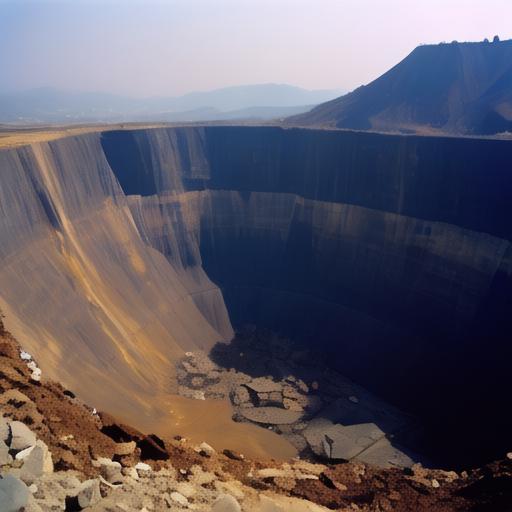
In the hinterland of the Taklamakan Desert, Chinese geologists recently announced a breakthrough that could rewrite the history of global uranium exploration - the discovery of the world's deepest sandstone type industrial uranium deposit at a depth of 1820 meters underground. This discovery not only breaks the world record, but also reveals a new possibility for deep earth resource exploration, with an impact far beyond the energy field, touching the deep boundaries of geological science cognition and technological innovation.
The core of this breakthrough lies in the verification of disruptive theories. Traditional sandstone type uranium exploration follows the principles of "dark sedimentary construction" and "basin edge prospecting", while the Tarim team analyzed 30-year exploration data and found radioactive anomalies in red beds far from the basin edge, proposing a "seepage infiltration complex genesis area prediction model". The breakthrough of this model is that the red variegated beds in the main basin can form uranium ore bodies under specific conditions, which turns the prospecting horizon from the edge to the core area, and finally verifies the existence of thick uranium mineralization in the hinterland of the desert. At the technical implementation level, the team integrates a "sky space earth depth" three-dimensional detection system, combines remote sensing, geophysical, and geochemical data, and constructs intelligent prediction methods to accurately locate target areas. Faced with challenges such as thick desert cover and loose strata, our independently developed deep hole efficient drilling technology successfully penetrated complex geological structures and ultimately captured key data at a depth of 1820 meters. This technology combination is not only applicable to uranium mines, but can also be extended to other strategic mineral exploration, forming a replicable deep earth resource exploration model.
The geological complexity of the Tarim Basin has long been regarded as an obstacle to prospecting: 337000 square kilometers of desert cover, multi-stage tectonic movement, and widespread distribution of red beds. But it is precisely these characteristics that become breeding grounds for uranium enrichment under specific conditions. Research has found that this region has similar mineralization geological characteristics to the uranium rich areas in Central Asia, suggesting that a systematic mineralization network may be hidden deep within it. The uranium mineralization discovered this time is located in the red variegated layer, which proves that sandstone type uranium mineralization is not limited to traditional dark sedimentary environments. Red formations can also form economic ore bodies under changes in oxidation-reduction conditions. The deeper revelation is that the resource potential in the deep parts of the Earth is far from fully recognized. Previously, the exploration depth of sandstone type uranium deposits worldwide was mostly within 800 meters, with a maximum record of 1500 meters. However, the Chinese team pushed this boundary to 1820 meters, revealing the possibility of undiscovered huge resources in deep strata. This cognitive shift will drive the global uranium exploration strategy to shift from "shallow edge" to "deep core".
Against the backdrop of nuclear energy's prominent position as a clean energy strategy, the ability to independently safeguard uranium resources is directly related to national energy security. China's breakthrough not only provides key support for the construction of uranium resource bases, but also builds an independent and controllable system for the entire exploration and development chain through technological innovation. It is worth noting that although deep mining currently faces cost and technological bottlenecks, this discovery reserves space for future technological breakthroughs - when technologies such as deep drilling and in-situ leaching become more mature, a depth of 1820 meters may become a new starting point for resource development. In addition, this achievement validates the collaborative innovation model of "theoretical innovation technology breakthrough engineering practice". The Chinese team has achieved a deep integration of geological science and engineering technology at the methodological level, from proposing complex genetic models to intelligent transformation of drilling rigs, from data algorithm optimization to extreme environmental operations. This model has demonstrative significance for global resource exploration, especially in areas such as mineral exploration in coverage areas and deep resource prediction, providing a replicable path.
The international geoscience community has responded cautiously but positively to this. Some experts point out that China's breakthrough not only sets a new record, but also reconstructs the theoretical framework of sandstone type uranium deposits, which may trigger global exploration strategy adjustments. A geological research institution in Europe commented that "while most countries are still searching for uranium deposits in the shallow layers of the basin edge, China has already turned to the deep earth for resources, and this strategic vision is worth paying attention to." However, challenges still exist. The economic exploitation of deep uranium mines requires breaking through the bottleneck of in-situ leaching technology in high-temperature and high-pressure environments, while balancing environmental costs. But as the project leader said, "We not only found mines, but also created a detection technology system suitable for global desert areas." This technology spillover effect may drive global deep earth resource exploration into a new stage.
The significance of this discovery lies not only in the uranium mineralization at a depth of 1820 meters itself, but also in the spirit of technological self-reliance it symbolizes - when traditional theories define boundaries, Chinese scientists choose to redefine possibilities through practice. This silent revolution may be heralding the arrival of the deep earth resource era.

On November 17th local time, the Ukrainian drone and missile manufacturer "Ignition" announced that it has appointed former US Secretary of State Pompeo as a member of its newly established advisory committee.
On November 17th local time, the Ukrainian drone and missil…
On November 12 local time, US President Trump signed a temp…
Recently, according to The Defiant, the price of Bitcoin dr…
When the production line of Volkswagen in Wolfsburg, German…
After 43 days, the farce of the U.S. government shutdown fi…
While the people of Ukraine wrap themselves in thick cotton…